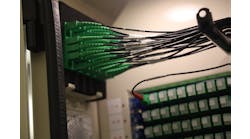It won’t happen overnight, but eventually microgrids will interact with each other to achieve greater efficiencies, a concept known as microgrid clustering or grid-of-microgrids.
Michael Carlson, president of Siemens Smart Grid North America
How much and how soon remains to be seen, but clustering is beginning. Commonwealth Edison is the first utility to move forward with a microgrid cluster of significant scale, a project known as the Bronzeville Microgrid that will connect with a microgrid operated by the Illinois Institute of Technology on the South Side of Chicago. Siemens recently won the contract to provide software to manage the project.
In a recent interview, Michael Carlson, president of Siemens Smart Grid North America, described the challenges ahead for the industry as microgrid clustering takes its first steps. Interestingly, they are not necessarily technical, he said, but more the dilemma of human nature.
“We’re not talking so much about software, but about how everybody has a different vision of how it will happen,” said Carlson, who will be a featured on a leadership panel May 7 at Microgrid 2018.
Microgrid clustering not a new concept
Microgrid clustering is “not a new concept but it is a new endeavor,” he said. And with any new endeavor you have different priorities among the parties involved. Utilities may have one set of priorities, microgrid industry participants another, and customers still another.
Consider a situation, he says, where the asset owner has just invested $1 million in a microgrid. The owner’s priority may be to sell as much power from the microgrid as possible. But that could be detrimental to someone else on the system. “For the greater good, we may have to do something that isn’t good for the individual,” he said.
So who decides who wins or loses in any given scenario on a distributed grid?
The microgrid industry needs to create a framework for such decision-making, he said. And it can look to other places in the energy market for models. One would be the independent system operator (ISOs) and regional transmission organizations (RTOs) developed over the last two decades to manage wholesale markets.
“They are examples of a function, a process, an entity that was created to balance serving all of the constituents.” Participants may win at times, lose at others. “It will be a balance,” he said.
Creating the right environment
New York’s Reforming the Energy Vision (REV) is an attempt at creating a uniform platform for such decision-making for distributed energy resources.
“They want to create an environment where people have the choice to participate or not participate and there are not barriers to entry that prohibit that integrated participation,” he said.
Blockchain also offers a universally “low-to-no cost” environment that reduces barriers to participation for smaller players in the market. Siemens is partnering with LO3 Energy, which is developing a blockchain microgrid in Brooklyn, designed to allow households to buy and sell local, emissions-free electricity directly from one another.
Deciding when to buy and sell energy is no easy task. Energy markets are complex. So automation is essential for household participation. Consider how cellular networks work in determining the best path for your phone call.
“You have to buy a cellular device. But you don’t have to invest time in telling the cellular system how to transact what you want it to do,” he said “While people want to be more engaged in their energy management, they don’t want it to consume their lives. They want it to happen ubiquitously, behind the scenes.”
Where are we on the spectrum of achieving such automation and distributed energy clustering? “Very strongly, early stages,” he said.
The industry understands the high-level problem statement, but still needs to understand the details. Once that’s done the industry will set rules. Then those rules “are going to have to mature to a point in time that gives us confidence in how they act,” he said.
Just the beginning…
It will take some time.
“Look at how cellular roaming has matured over 20 years. Probably for the last 10 years, cellular roaming has occurred without any knowledge, concern or understanding of the user. I can remember when I first got a cell phone and paid a bill. I paid a lot for the roaming on my phone. Now there is no roaming signal on the phone,’ he said.
The same thing will happen with microgrid and distributed energy clustering, he said, in terms of both technological and business model advances.
To put the path in perspective, consider where the power industry has been, where it is now and where it is going with futuristic concepts like a grid of microgrids.
For years the grid has been controlled by singular entities, utilities. “Now we are talking about a lot more devices being under the control and coordination of multiple organizations. If you think about a homeowner being a distributed energy/operator and everyone doing this on their own, now you have exponentially increased the number of decision-making participants that have to be considered. That is the difference from what we have today and what we need tomorrow,” he said. “So there is quite a bit of work to be done here.”
Track news about microgrid clustering by subscribing to the free Microgrid Knowledge newsletter.







